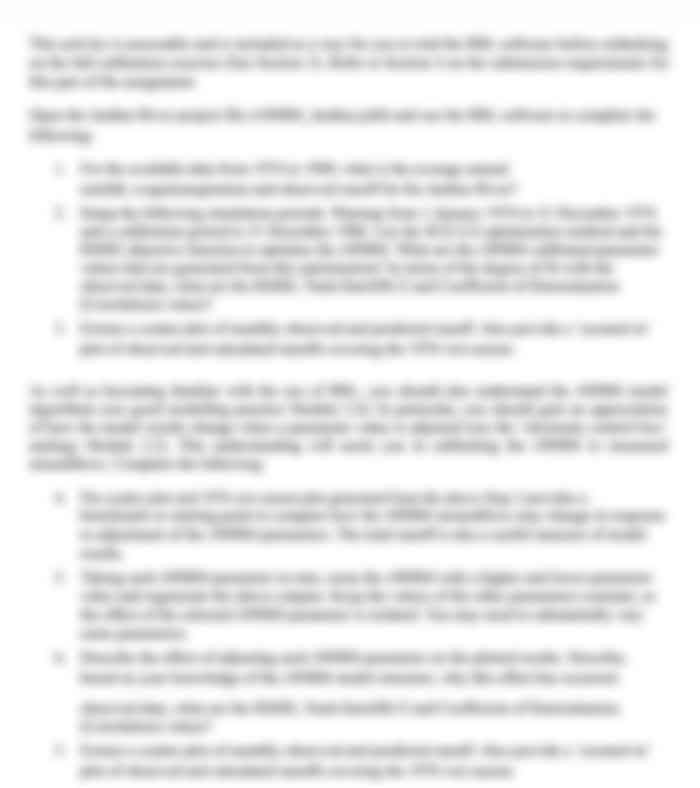STAT6200 Statistics Interpretation Report
Paper1:
ReadtheKokkinosetal.(2013)paperandanswerthefollowingquestions:
- Classify the main baseline characteristics (e.g., age, weight, ethnic origin, etc.)according to the statistical test used to generate the results in Table 1. Explain whythosetestswere appropriateforthe given
- Refertothelefthalf/sideofTable2(Patientstreatedwithstatins).Interpretthemeandifferencesand95% confidence intervals (CI)
- Refer to the right half/side of Table 2 (Patients not treated with statins). What do thep?values,tellyouaboutthestrengthoftheevidenceagainstthenullhypothesisofnodifference between thelipidvaluesinitiallyandatfollow?up?
- WhattypeofvisualrepresentationisshownintheFigure?Describethegraphbasedon thegiven
- In the abstract of the paper, the interpretation reads: (a) Statin treatment andincreasedfitnessareindependentlyassociatedwithlowmortalityamongdyslipidaemic individuals. (b) The combination of statin treatment and increasedfitness resulted in substantially lower mortality risk than either alone, reinforcing theimportance of physical activity for individuals with dyslipidaemia. (Kokkinos et al.,2013)Providethebasisforthesestatementsbypresentingdatareportedinthepaper(e.g., values from tables, graphs) and explaining how they support the statementsYoumayusescreenshotsofthetablesandhighlightthemusingboxes/arrows.
Paper2:
ReadtheHazratietal.(2016)paperandanswerthefollowingquestions:
- What are the demographic characteristics of the participants in the sample? Explainbyreferringtothedescriptivestatisticsreportedin the
- Whatistheresearchquestionforthisstudy?DefinethenullandalternativeDescribethevariablesanalysedinthehypothesistesting.Whatstatisticaltestwasusedtoanalysethe associationofthevariables.Explain.
- Comment on the Pearsons correlation coefficients found in Table 2. What do thesevaluesmean?Howwouldyouusethesevaluestoanswertheresearchquestions?
- Explain the circumstances which would persuade you to use Spearmans correlationcoefficientratherthanPearsons
- Whatwasthepurposeofthepairedt-testinthestudy?Whywasthistestappropriatefor the analysis? Explain the results of the paired t-test and refer to the appropriatetable/graph inthe
Paper3:
ReadtheOguzetal.(2021)paperandanswerthefollowingquestions:
- FromTable1,definehowthebaselinecharacteristicsoftheType2DiabetesMellitus(T2DM) participants were broadly categorized. Calculate the mean age, standarddeviation(SD)andrangeofsarcopenicWhatpercentageoffemalesandmales together did not develop sarcopenia? State the co-morbidities considered asbaselinecharacteristics fromthetable.
- FromTable1,definethetestusedtodeterminetheassociationbetweengenderandpatients with and without sarcopenia. Explain why this test was appropriate. Is therea significant association that exists between these two variables? Define the non-categoricalvariablesused asbaseline characteristicsinTable
- The association of anthropometric, body composition and laboratory parameters ofT2DM patients with and without sarcopenia are defined in Table 2. State for whichvariables the Chi-squared test and Mann-Whitney U-test were used. Include thecorrespondingp-valuesanddeterminethe statisticalsignificanceof
- Define the type of graph that was reported in Figure 2. What does it represent? InFigure3,identifythetypeofgraphBasedonthep-value,reportaboutthedistributionofGroup3(SO)forboth Irisinandmyostatin.
- Define the statistically significant variables for predicting sarcopenic obesity (reportboththep-valueandconfidenceinterval[CI]fromtheunivariateanalysis)reportedinTable 5. Report in terms of odds ratios (OR, with 95% CI) which variable was thestrongest predictorforsarcopenic obesity(univariate analysis).
Paper4:
ReadthepaperParajulietal.(2022)andanswerthefollowingquestions:
- What is the source of the sample? How much was the sample size for this study?What was the main outcome variable? What instrument was used to assess theoutcomevariable?
- How was the normality distribution of Locus of Control (LoC) assessed in this study?Whatwouldbeyourexpectedresultsfromyournormalitytest/s?Whatinferentialteststatistics were used to explore the differences of LoC scores between participantscharacteristics? Is it a parametric or non-parametric test? Explain briefly the reasonforchoosingthosetests?
- Refer to Table 1. What is the proportion (expressed as percentage) of people whowere older than 60 years old? Is age in this table presented as a nominal, ordinal orcontinuousvariable?JustifyyourCalculatetheinterquartilerangeforLoCfortotal hours worked per week. Show your solution. Using an alpha value of ? 0.05,interprettheinterquartile rangeforthisvariableusingthe p-value.
- RefertoTableInterprettheLoCbasedonASGC-RAclassificationaslivinginmajorcity and regional areas. Support your answer by interpreting the confidence intervalandp-values.Thereference alphavalueis ?0.05.
- Refer to Table 2. What type of regression model was applied to determine thesignificant predictors of LoC? Explain why this type of modelling was used. Lookingat the association between LoC and self-rated health, define the null and alternative Given the results of the multivariate analysis for LoC and self-ratedhealth, which hypothesisshouldbeaccepted?Explainwhy.

